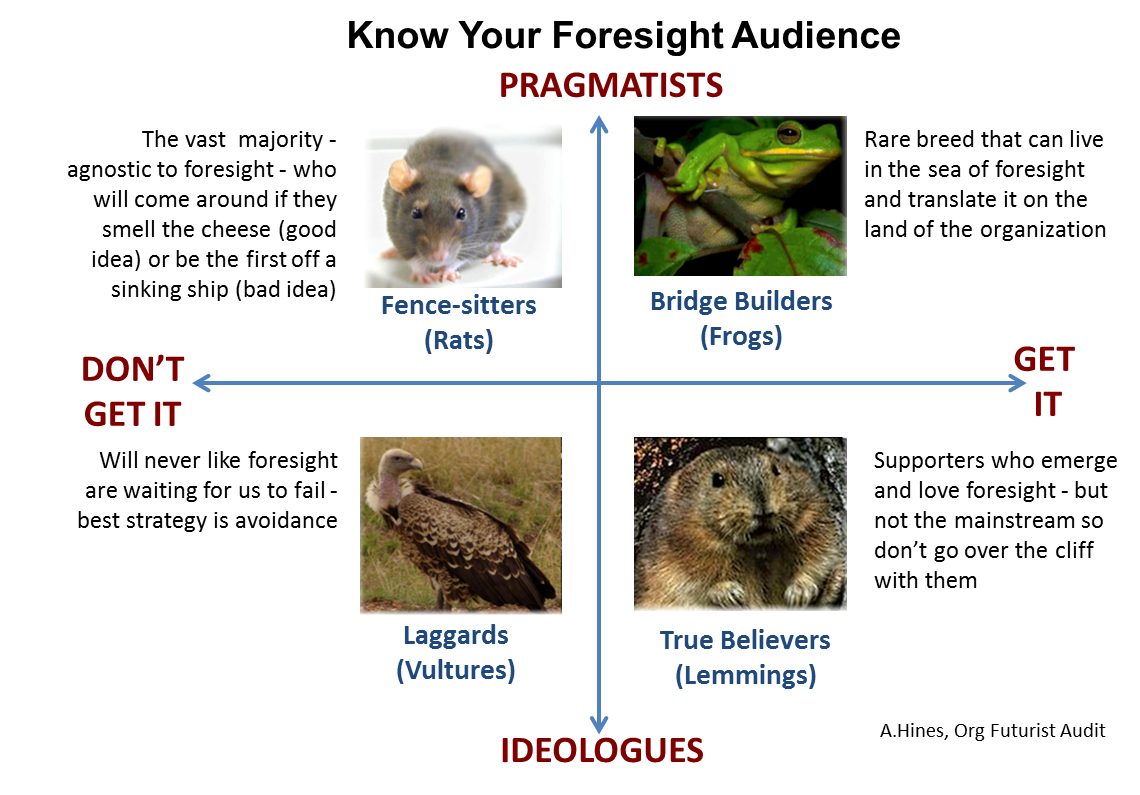During class last night on visualization techniques, a discussion emerged around when to try these techniques and with whom. I gave a quirk-and-dirty on “Know Your Audience” from the Organizational Futurist Audit. I wished I had a simple graphic handy to aid the explanation and thus figured it was to put one together. Figured I’d share it with y’all. It’s over a decade old but still robust and seemingly one of the few things people seems to remember
The basic idea is that there are “typical” responses to the foresight message, mapped along two dimensions. The first dimension is whether people get the foresight message or not. The second is a general approach to new information — some people are practical and others tend to have strong pre-existing views. The resulting four quadrants can be represented by various species, which seems to aid memorability.
The frogs are those rare folks in the organization who get foresight and are politically skilled in moving ideas through an organization. They are our dear friends, and we kiss our frogs, because they can help us get things done as well as avoid disaster.
The lemmings are the small minority in the organization who become enthusiastic supporters of foresight. They might be called the rank-and-file of the foresight army, who can help us expand from our initial beachhead. They are dubbed lemmings because if we get confused and think they are the majority, we all go over the cliff together.
The vultures are also relatively few, but they can be deadly enemies. They don’t like the message of change that foresight typically brings and see it as a threat. While we want everyone to love us, it is best to avoid these folks — they are not likely to be converted and more likely to to undermine your work.
Finally, the vast majority of organizational folk can be thought of as rats. They don’t have a personal stake in foresight and simply take it on a case-by-case basis. They tend to be skittish and risk averse, and must be carefully courted — but they can be won over. (As a personal aside, l though rats are often perceived negatively, I currently have a pet rat and she is the most wonderful and precious pet I’ve ever had!)
This simple framework can help you plan your efforts to introduce and spread foresight by being aware of who to court, who to avoi! d, and who your ultimate target it. Enjoy! Andy Hines


Leave a Reply